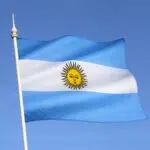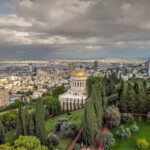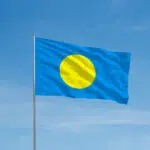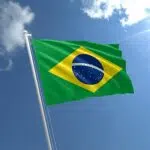The Brazilian state of São Paulo commemorates the 1932 Constitutional Revolution with State Rebellion Day on July 9 every year. The Constitutionalist Revolution of 1932 is the term given to the rebellion of the people of São Paulo, Brazil, against the Brazilian Revolution of 1930, when Getúlio Vargas was elected president of the country. Local dissatisfaction grew as a result of Vargas’ rule by decree under a provisional government that was not governed by the constitution. The São Paulo Revolution of 1930 attempted to erode the autonomy that states had throughout the 1891 constitution’s period.
History of State Rebellion Day
After the slaying of four protesting students by government troops on May 23, 1932, the state fight for revolution began on July 9, 1932. Following their killings, a movement known as M.M.D.C. arose, named after the initials of each of the four students killed: Martins, Miragaia, Dráusio, and Camargo. Alvarenga, a fifth victim, was also shot that night but died months later. It took a few months for the state of São Paulo to defy the federal authorities. The politicians in São Paulo expected a swift fight as a result of the assurance given to them by the elites of politics from two other influential states in the area, namely Rio Grande do Sul and Minas Gerais, but their camaraderie never translated into actual backing. This caused the insurrection in São Paulo to be put down by the military on October 2, 1932.
There were 87 days of warfare in total, with 934 official deaths and an estimated 2,200 non-official deaths. Despite the military setback, Vargas finally accepted several of the primary objectives of the state revolutionary movement, including the appointment of a non-military state governor, a new election of the Constituent Assembly, and the ratification of a new constitution in 1934.
However, the constitution was short-lived, as Vargas closed the National Congress in 1937, amidst rising political radicalism, and approved a new constitution, establishing the Estado Novo administration. July 9 is a holiday and the most important civic day in the state of São Paulo, as it commemorates the start of the 1932 revolution. It was the first significant uprising against Getúlio Vargas’ regime and the last major armed battle in Brazilian history.
State Rebellion Day timeline
Vargas closes the National Congress and establishes the Estado Novo administration, making the new constitution short-lived.
The ratification of a new constitution in São Paulo occurs.
Vargas promises a constitutional assembly election.
The seeds of the state insurrection are sown after the Democratic Party's anticipation to take over the state from the São Paulo Republican Party.
State Rebellion Day FAQs
What is State Rebellion Day?
The Brazilian state of São Paulo celebrates State Rebellion Day to commemorate the 1932 Constitutional Revolution.
When is State Rebellion Day?
State Rebellion Day is celebrated on July 9 annually.
What is the definition of a state rebellion?
It’s a type of martial law that empowers the government to use wiretaps to repress protests, imprison and arrest people, search private property, read private mail, and listen in on phone calls.
How to Observe State Rebellion Day
Take a trip to Brazil
São Paulo’s State Rebellion Day is commemorated in a variety of ways across the country. Visit the land of drizzles, take a trip to the sites of the rebellion and witness the remnants of history firsthand.
Share on social media
Being unable to visit São Paulo should not stop you. You can make a post in honor of State Rebellion Day and the lives that were lost. Use appropriate hashtags to get people to join in.
Read up on São Paulo's history
Join in the observance by reading up on São Paulo's history. Educate yourself on its origin story, its fight for autonomy, and the many monumental occasions that define São Paulo.
5 Fascinating Facts About São Paulo
A million pizzas are produced daily
The city has the country's largest Italian community, with over 6,000 pizzerias producing over 1,000,000 pizzas every day.
A large population
São Paulo is one of the world's five largest populations.
Third-largest metropolis
São Paulo is the world's third-largest metropolis.
A rhinoceros electoral candidate
In São Paulo’s Municipal Council Elections in 1958, a rhinoceros known as Cacareco ran as a candidate.
Japanese ancestry
São Paulo has more residents of Japanese ancestry than any other city outside of Japan.
Why State Rebellion Day is Important
It has a long history
São Paulo has a long and illustrious history. With 463 years of history, it continues to play a pivotal role in the Brazilian landscape, both financially and creatively.
Excellent architecture
São Paulo has art deco treasures, such as a replica of the Empire State Building, as well as mid-century modern architectural structures. The eye-catching architecture aside, São Paulo is known for its amazing assortment of museums. From the eye-catching centerpiece of the city's most famous thoroughfare, Avenida Paulista, to the Pinacoteca, São Paulo's oldest art museum.
It serves as a memorial
July 9 of each year serves as a memorial to the Constitutional Revolution that took place in 1932. It is a holiday to mark the coup d’état that took place when Getúlio Vargas was elected president of the country.
State Rebellion Day dates
| Year | Date | Day |
|---|---|---|
| 2025 | July 9 | Wednesday |
| 2026 | July 9 | Thursday |
| 2027 | July 9 | Friday |
| 2028 | July 9 | Sunday |
| 2029 | July 9 | Monday |











